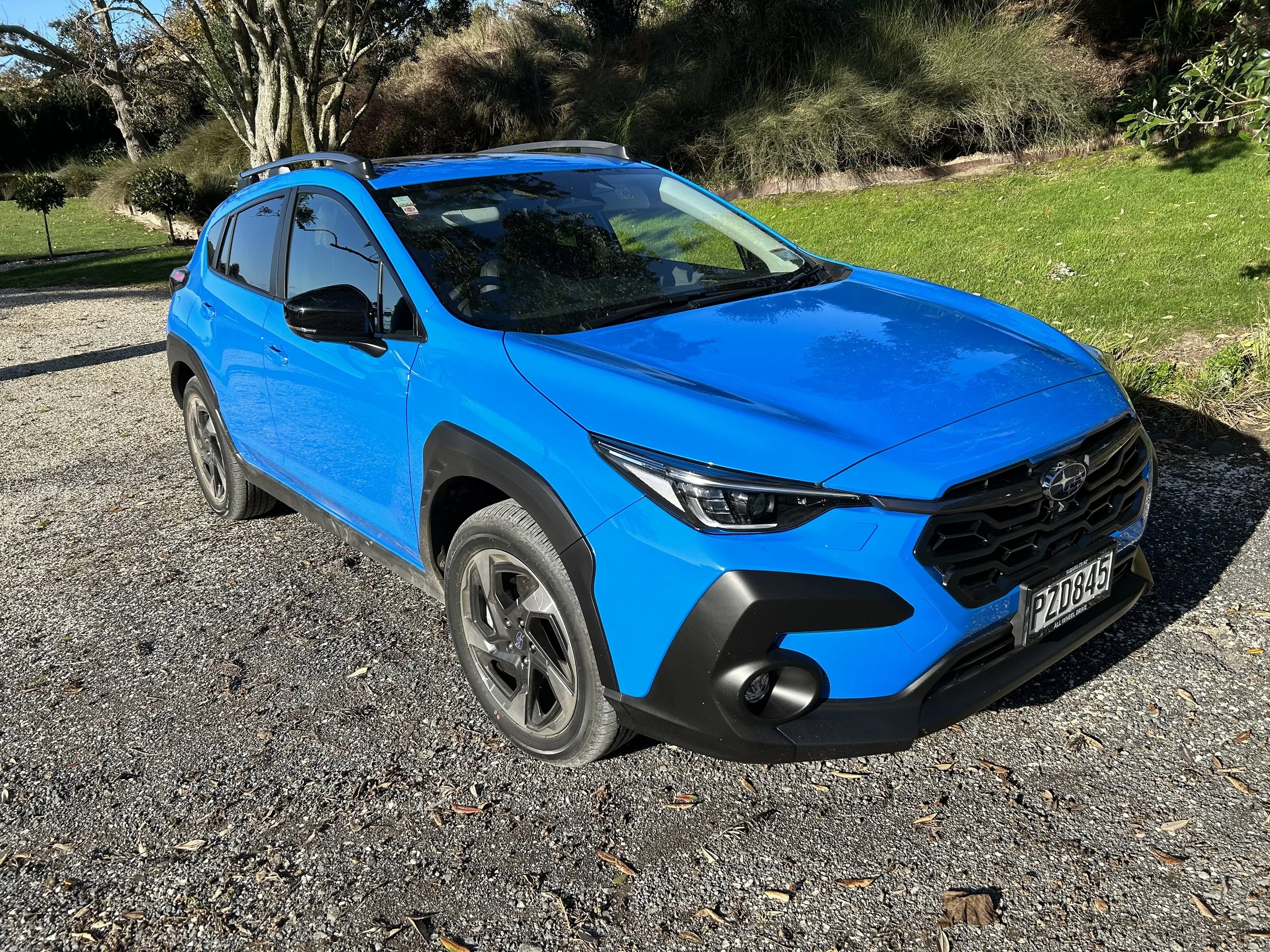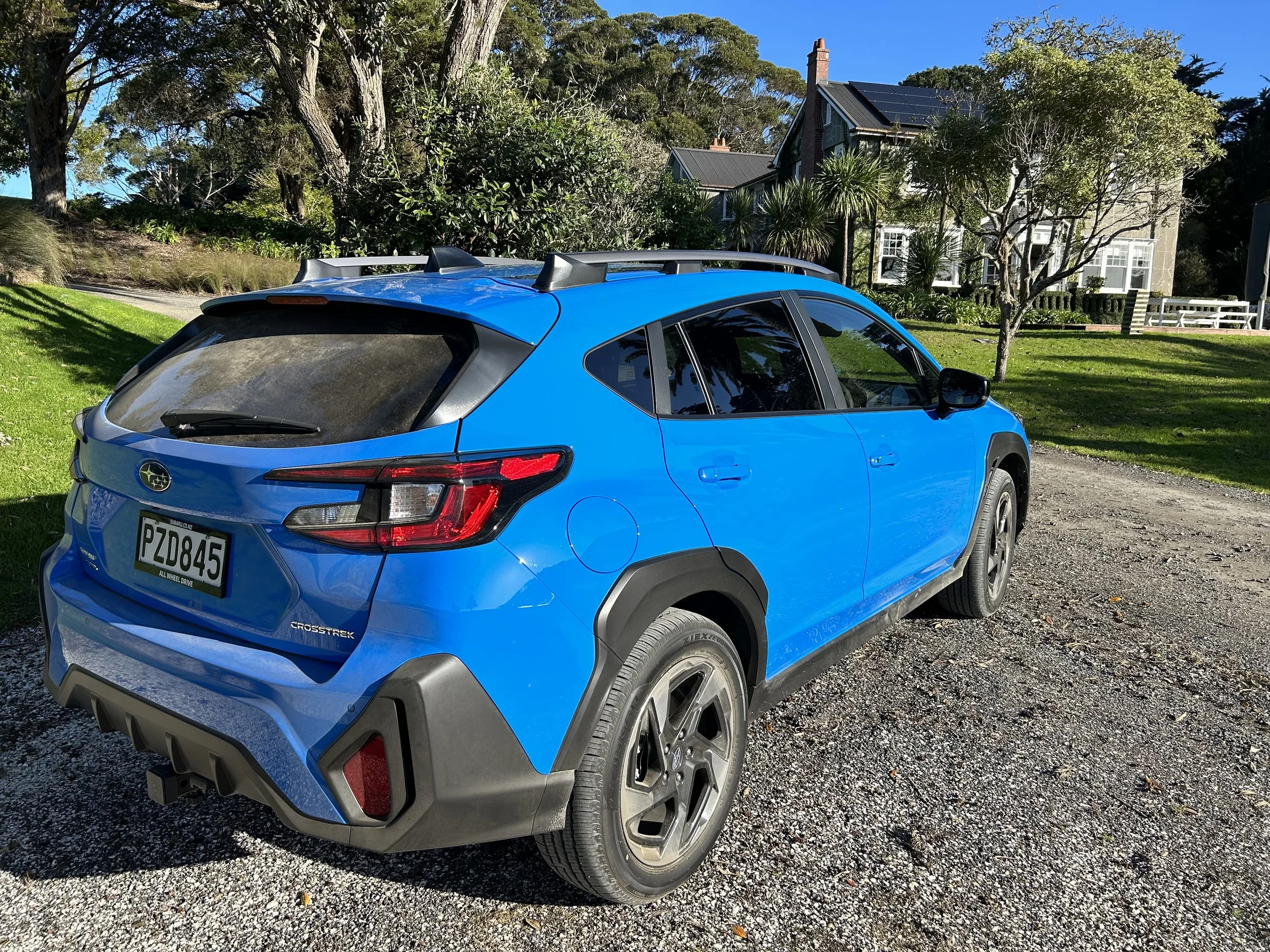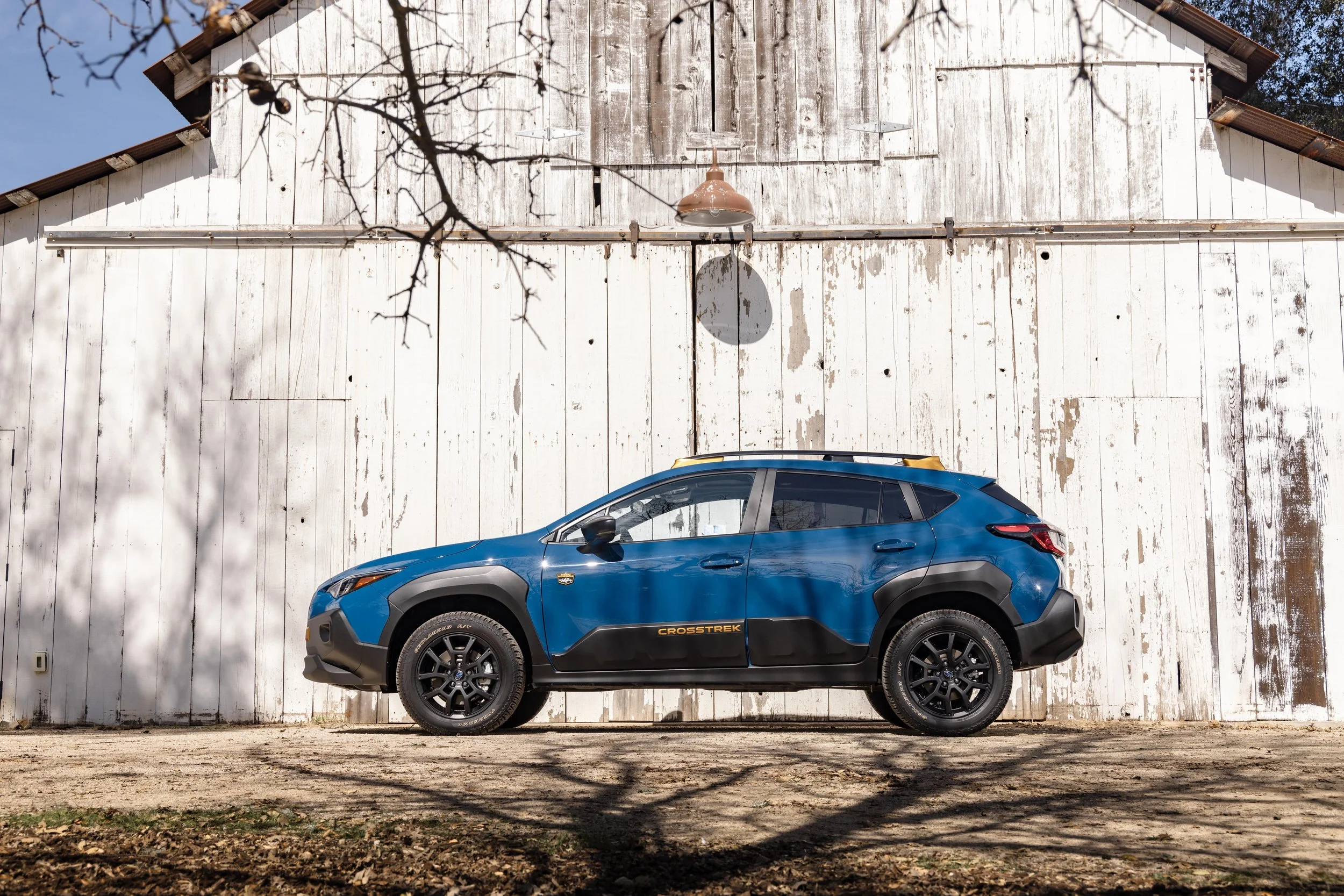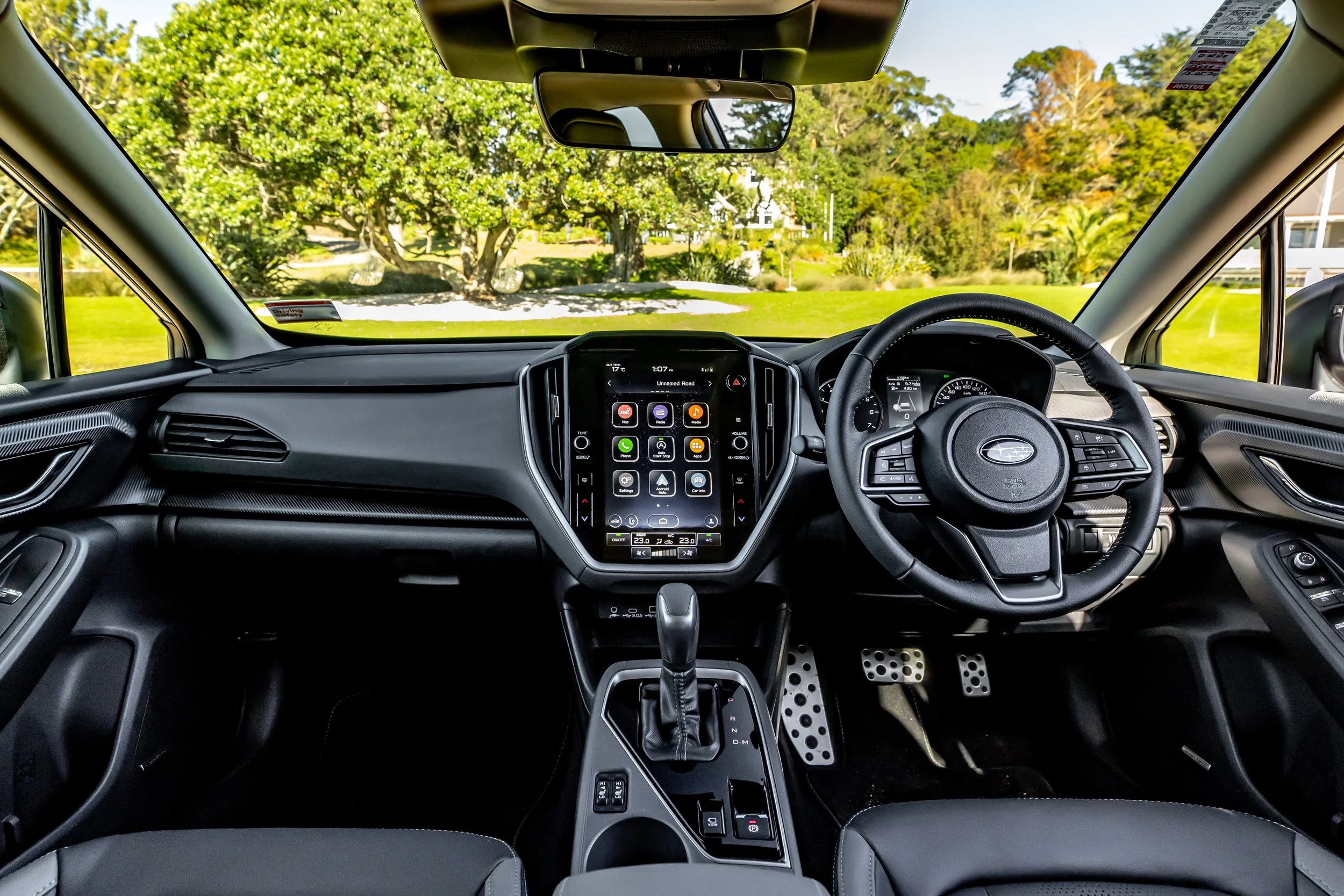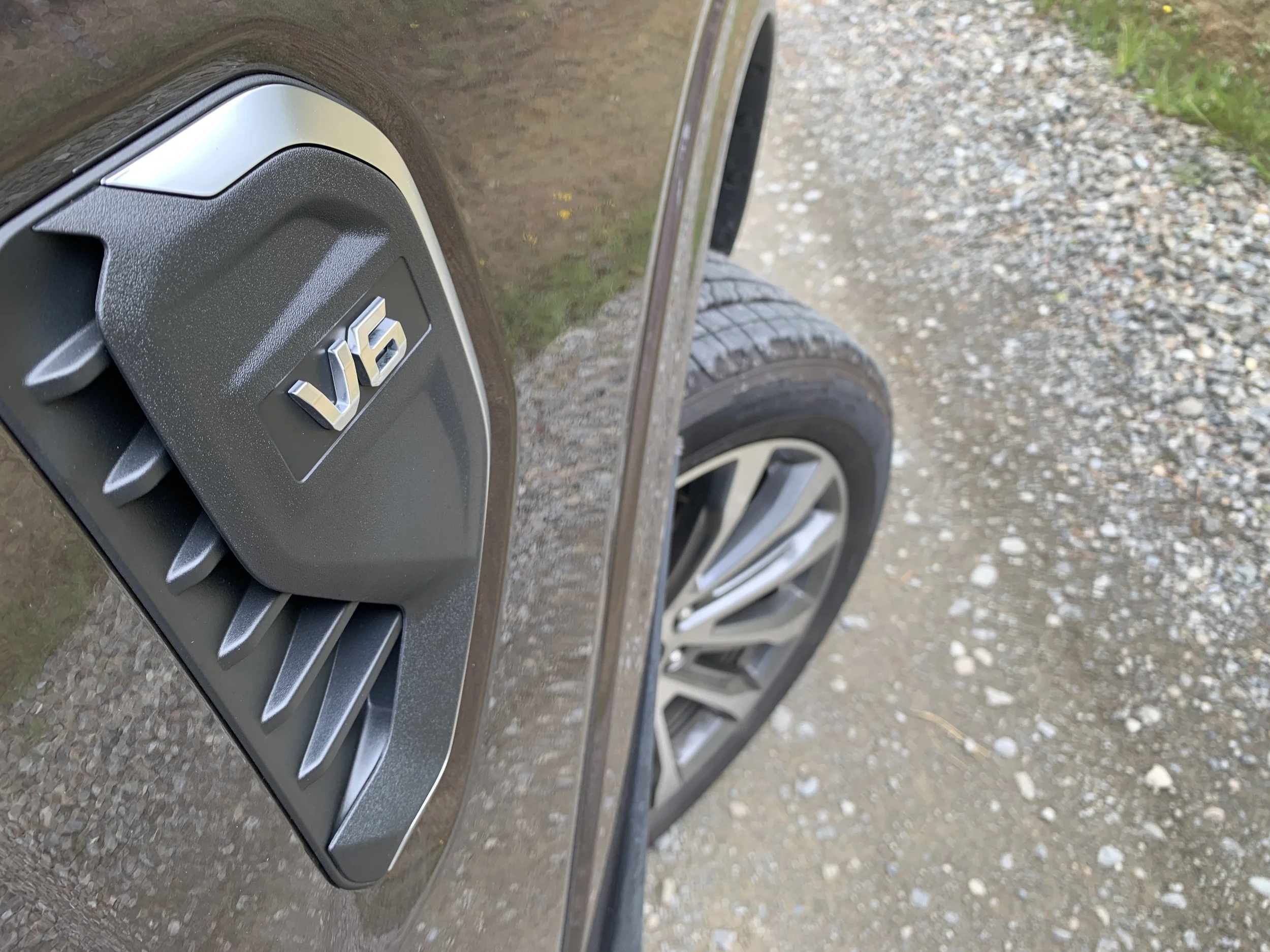Subaru Crosstrek first drive review: New name, familiar feel
/Freshened styling, an updated platform, more content including a smart screen and an enhanced EyeSight … but no improvement under the bonnet. Yet.
MORE oomph, not just powertrain-wise but also in the overall look and off-road ability, seems likely next year for a small Subaru crossover that has just arrived in a third generation.
What we used to call the XV has a fresh identity, Crosstrek, a name adopted from North America - which also has a bespoke Wilderness edition Subaru New Zealand also intends to release, pending Japan head office approval.
Securing the car in its ultra-outdoorsy guise when he goes to Japan next week is as much as a priority for Subaru NZ boss Wallis Dumper as his other imperative - achieving supply of make’s first electric, Solterra, to make good on 50 firm orders and promise to have it here this year.
Getting at least some cars here in December, as hoped, will represent as a third time lucky pitch for the medium battery-dedicated sports utility.
First signalled for 2022 arrival, the sister ship to Toyota’s also-delayed (likely to 2024) bZ4X was then expected to release two months ago - a timing Subaru NZ was so confident of meeting it took a Japan-spec Solterra on national road show. But everything again fizzed. Now they hope to have it as a Xmas present.
In the meantime, the national distributor is working to motivate consumer interest with the Crosstrek, the smallest and lowest priced of its sports utility choices.
The car coming with a fresh identity will stir interest, though will also remind that, despite the ‘gen three’ descriptive, it struggles to be called a wholly fresh start.
Though it delivers with altered exterior styling, that matches Subaru's current design language, and has interior updates - the most obvious being it securing the 11.6-inch vertical tablet centre console screen from Outback - there are enough commonalities to make firm connection with the outgoing XV product.
Same platform, same pair of 2.0-litre four-cylinder boxer powertrains in same modest tune feeding through a constantly variable transmission and -though the bias has changed from a 50:50 split to a front-biased 60:40 - the same symmetrical all-wheel-drive, wrapped in the same general look.
A couple of hours at the wheel enforced the usefulness of improvements to body rigidity (now claimed to be on par with WRX), suspension tune and the traction. Driving restricted to seal, but on that surface it’s a car that scampers more assertively through corners and appears to have sharper turn-in, though steering feel at dead-centre is a bit vague.
But while the dynamics, driver aides and comfort are improved, Subaru in carrying over the old powertrains could be running risk.
The FB20 flat-four engine and CVT combo, only tested in pure petrol format - the hybrid is still a month away - was the least personable powertrain in the XV and, if there’s any extra charisma lurking now, it remained hidden on the taster drive.
It’s a bit quieter now, but on-paper outputs that now put it mid-class in an increasingly competitive category are a burden. The example I drove was brand-new, so tight; boxer engines tend to free up over time. It ran well enough in cruise, but when asked for more, was slow to deliver; disconcertingly so during an overtake, when the eight step CVT (seven with hybrid) was also hesitant to drop back into the power band.
The car’s greater strength is the symmetrical all-wheel-drive. Most alternates in the class are softies with front-drive whereas Subaru’s is assertively all-paw all of the time, so lends great traction and grip and is also robust.
The range has been tweaked slightly, in that whereas previously there were two fully petrol-fed types and two hybrids, now those wanting to sidestep electric-involvement will find the petrol containing to the top $48,990 (from $45,990) Premium, spec, the previous base XV petrol that sat at $40,990 not being replicated.
The e-boxer again represents in standard and Premium guises, which having been $44,990 and $49,990 previously, are $46,990 and $51,990 under the Crosstrek banner.
Given that pricing has only bumped up $2000 to $3000, Subaru is confident the car will do as it has previously - secure fewer sales than Outback and Forester, but still keep the flag flying in a key sector.
In the launch form, it is expected to maintain the same buyer set - basically, people of all ages, couples or families, with an adventurous spirit - and to undertake the same roles, with quiet determination.
Crosstrek Wilderness (above) will be much more of an extrovert as it delivers with a bolder outdoorsy look, an even tougher suite of talents to abet the already impressive X-drive and a 2.5-litre engine well proven in other models.
While only (going by US market outputs) 1Nm torquier than the Crosstrek’s 196Nm 2.0-litre, the bigger lunged four-cylinder is markedly more powerful - 136kW versus an insipid 115kW - and has, in other applications, been a friendlier power plant, not least for mid-range pluck.
Wilderness editions of Crosstrek, Forester and Outback debuted in the US two years ago. Dumper wants them all, but intends to start with Crosstrek. Providing he can persuade Japan.
The challenge is that the types for now remain exclusive to North America and are only built there. That factory in Indiana provided the long-defunct Tribeca SUV here for a few years from 2005, but now dedicates to only its own turf. Wilderness cars for here would have to be provisioned by Japan. Conceivably, that would mean it replicating all the enhancements created by the Americans.
Or buying them in. One enterprising Kiwi has done just that. He purchased from Subaru US the entire kit and caboodle - the taller suspension for additional ground clearance, knobbly tyres for better off-road grip, lightweight alloy wheels, unique body protection, and all the trim highlights, including the badges and mats - to toughen up a brand-new NZ-market Outback XT. It looks brilliant.
What helps the New Zealand push is that Subaru Australia is also petitioning for the type; seeing it as a good fit for (ahem) outback adventures.
Dumper is confident: “The great thing is that Australia also want it. That will give us leverage. They have to get it homologated before they can make it for our markets.”
But there is a powerful combined volume argument. Australia accounts for at least 40,000 Subarus annually. With Wilderness, that count could rise another 10,000 units, Dumper believes. So even if NZ take just a few hundred … well, the maths are in our favour. It doesn’t hurt, either, that Subaru Australia’s boss started out with the NZ operation.
Says Dumper: “We’ve been wanting Wilderness since it was first shown. We would love to add it; everything about it looks right.”
Insofar as Crosstrek goes in its current state? The hybrids aren’t here until July, so driving experience was just with the petrol Premium.
Subaru sees a brighter future for the hybrid, because more people like that kind of tech. But the system being no different than it has been hardly bodes well. In past testing, it has been a disappointment.
Notwithstanding the electric motor can drive the wheels, in some circumstances, the set-up overall on past evidence fails to deliver much benefit. With the old XV, there wasn’t much obvious extra oomph from the electric assist and even when driven with extra care, it was not easy to elicit tangible additional efficiency.
Subaru’s own factory data shows the gains are slim. The claimed optimal 6.5 litres per 100km consumption is just 0.7 litres per 100km superior to economy cited for the pure petrol. Category rivals? Best, perhaps, is the Toyota Corolla Croso hybrid all-wheel-drive, which will deliver an optimal 4.4L/100km.
On CO2 count, Crosstrek from July 1 becomes another hybrid that fails to impress Clean Car gurus. While WLTP standard are yet to be sorted, on the older NEDC scale the petrol-electric outputs 147 grams of CO2 per kilometre. That earns it a $1830 penalty; just $700 less than the petrol, which outputs 165g.
The cheapest Crosstrek has cloth trim, the Premiums take leather and a sunroof, but all variants have heated front seats and external mirrors, better LED headlamps and LED DRLs and are the first Subarus to get an updated Eyesight alert and accident system. Formerly running two stereo cameras mounted atop the windscreen, Subaru has added a third camera to the array, which delivers a much wider viewing angle to complement the longer focal point of the two stock lenses. The Premium also has a full 360 degree surround view display.
XV had a five star ANCAP rating, but that was determined in 2017 and the test became a lot tougher from the start of 2023.
There’s thought the predecessor’s score will degrade, as even though the Crosstrek has nine airbags now, it lacks a front-central device that ANCAP - and its Europe-based sister organisation, NCAP - has determined as crucial to achieving the highest star count.
An ANCAP/NCAP test is scheduled for next year and in the interim it holds five stars from the Government’s self-developed Vehicle Safety Risk Rating assessment, created for new cars that bypass ANCAP scrutiny.
The writer attended this event as a guest of the distributor, with travel, a meal and a modest gift provided.

